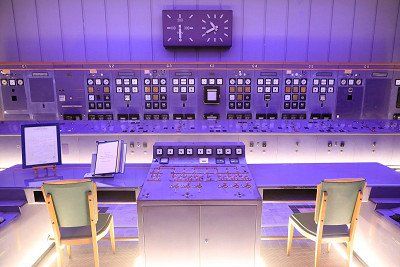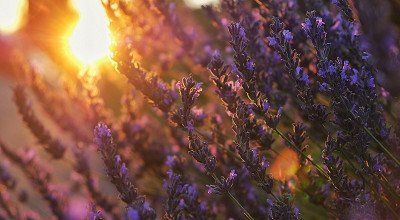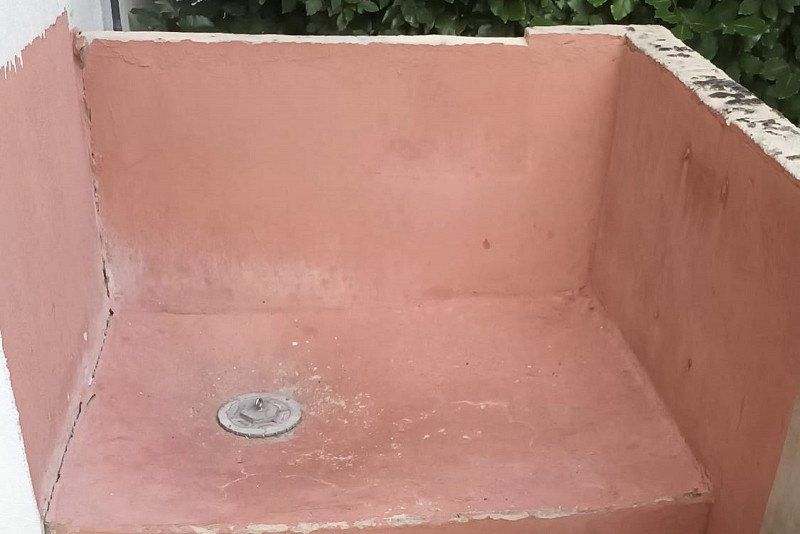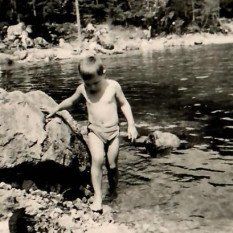The Rhône valley in the west, the Luberon massif in the east and Mont Ventoux right in the middle towering over it all. A Provençal region, Vaucluse boasts a stunning diverse landscape as well as many amazing sights and culinary delights within a small area, which will help keep your fuel costs down. Bon voyage!
Where is Vaucluse?
The department of Vaucluse is located in southeastern France in western Provence. The Vaucluse plateau is embedded between Mont Ventoux in the north and the Luberon in the south. Although quite mountainous, it's dominated by gentle ridges that are not too steep. The primeval landscape is full of forests, herbs, corn fields, lavender fields and clear streams – and dotted with small mountain villages, castle ruins and old churches waiting to be discovered. And in addition to several small, lesser-known attractions, this region has a few world-famous sights that are a must-visit on any camping holiday or motorhome trip. And at one such location is exactly where our tour starts:

Stop #1: UNESCO World Heritage Site in Avignon
We've all sung about the bridge, but you might not have known that popes and antipopes resided in Avignon for almost a century in one of the largest and most important medieval Gothic buildings. This is why the Papal Palace along with the fantastic Old Town is on the UNESCO World Heritage List. Judging by its popularity, Avignon with its 90,000 inhabitants is anything but a large city, and only 15,000 people live within the city walls. However, it's imperative to know that despite the town's historical importance, Avignon is anything but an open-air museum, and that people go about their daily lives just like in other towns and villages. There are numerous bars and restaurants, and the indoor market opens early in the morning with smells of Provençal specialities wafting around every corner. Just follow your nose and you can't go wrong.
And if you're interested in culture, we recommend staying several days as the list of things to see and do in Avignon is extremely long.

Stop #2: Bollène – a technical masterpiece on the Rhône
Not as well-known, but no less fascinating – about an hour north of Avignon near Bollène is the Centrale Hydroélectrique André Blondel. Open to visitors since 2019, this hydroelectric power plant shows how the power of the Rhône was harnessed to produce electricity at the beginning of the 20th century. The Compagnie Nationale du Rhône (CNR) operates 19 hydroelectric power plants along the river, generating around 3% of the electricity in France, as you will find out when walking through the former control room. Afterwards, you can take a look at the huge turbines that are kept running by the water of the river. It's also an impressive illustration of the great effort that was made from the mid-1940s to give the Rhône a second branch so that electricity could be generated. Around 5,000 to 7,000 workers were on site at the time and also built what was then the largest lock in the world. You might just get the chance to see a ship go down the lock. After enjoying the fascinating tour, enter Séguret into your motorhome's navigation system and head to our next stop.

Stop #3: Precise craftsmanship in Séguret
Séguret lies not only in a stunning location on the Dentelles de Montmirail mountain range, the village is stunning in itself. It's not for nothing that it's regarded as one of the most beautiful villages in France. However, due to its medieval character – cobbled streets, a gate lined with old houses, the Fontaine des Mascarons stone fountain and the ruins of the feudal castle – it can only be explored on foot. Therefore, park your car or motorhome elsewhere, if possible. Incidentally, Séguret is often referred to as a life-size nativity scene – and not without reason. You can find out more in the Les 3 Souquets workshop and shop owned by the Santon Provençales maker Denis Voeux. He comes from this village and is carrying on a long family tradition. He moulds figures of saints and ordinary people out of clay, paints them by hand and uses the faces of local residents as models for his Provençal nativity scene. And you could say that their universe has also been used as religious propaganda – the first spam in the 20th century, explains the artist with a smile.

Stop #4: From Malaucène to the 'Giant of Provence'
When cyclists hear the name Malaucène, it sends a shiver down their spines and their calves may start getting cramps, too. Why? Because the western ascent up to Mont Ventoux begins in the small town of Malaucène and first goes through a forest that gets thinner the further you go up and then takes you through a completely petrified landscape until you reach the summit. A surreal environment that doesn't seem to be from this world. When the weather's good, you have sweeping views from the Mediterranean Sea to the peaks of the Pyrenees and the Alps, but sometimes the damp Provençal air gets in the way. It's definitely worth going up to the top, regardless of whether you cycle or drive your campervan. If you want to get up the mountain with your motorhome, avoid peak tourist times during the day and drive up Mont Ventoux early in the morning or in the evening. This way you'll also be steering clear of the times when most cyclists are on the narrow road as well as most of the oncoming traffic.

Stop #5: Lavender fields and the spectacular Nesque Gorge
The first houses of Sault come into view right after the last hairpin bend after descending Mont Ventoux. The Aroma'Plantes lavender farm and distillery lies on the outskirts of this pretty town. It's the perfect place to stop by if you want to find out more about how this nutrient-rich plant is cultivated and processed. A number of fields around Sault are covered in a lilac-blue carpet of lavender blossoms between mid-/late June and early/mid-August, with the light wind wafting their sweet scent towards anyone on or near the fields.



Leaving the colourful lavender fields behind, the road then seamlessly crosses the barren karst landscape of the Nesque Gorge. While driving through Sault on the D942, follow the sign to the right. The road then snakes its way to the village of Monieux for about 20 kilometres. The river has cut its path up to 400 metres into the hard limestone here. The small road literally claws its way into the rock in some places, at times even going through it. This is why this road is only passable for motorhomes no higher than three metres. Since some parts of the road are also quite narrow, we recommend this route only if you're an experienced camper and can assess and handle the size of your vehicle well. Our Freeontour tip: travel either early in the morning or in the evening as there won't be much traffic and you'll be able to appreciate your surroundings better, e.g. the rock faces and the small river flowing far below whose water level is usually much lower in summer.

Stop #6: Sweet nougat specialities in Saint-Didier
It's not far from here to Saint-Didier, a small town southeast of Carpentras. The Silvain family has been producing light and dark nougat – a typical Provençal sweet speciality made from honey and almonds – here for more than 20 years. They grow the ingredients themselves, with pretty much all of the family members who specialise in beekeeping or almond production involved in the business. You can watch them roasting the almonds, stirring the sweet mass, adding other ingredients such as orange flavouring or chilli and then cutting individual pieces of nougat out of the large trays. This is your opportunity to try some nougat yourself – and don't forget to take enough back to your motorhome.

Stop #7: Abbaye de Sénanque and Gordes, visitor favourites
The following two destinations aren't in any way an insider tip, but instead are extremely popular photo opportunities, especially for the many tourists here in peak season. If you come at less busier times of the day, you'll at least be able to enjoy them with fewer crowds and at your own pace. You'll find Abbaye de Sénanque on the D177 country road, hidden in a valley in the middle of the Plateau de Vaucluse towards Gordes. Probably one of the most popular photo motifs for visitors to Provence is the historic abbey in the background with lavender fields in bloom in the foreground. But it's also worth taking a look inside the complex where Cistercian monks still live. However, you can only access the monastery as part of a guided tour in French. If you don't understand French, you'll be given a tablet with the translations for the tour. The inside of the monastery is not accessible for wheelchair users. We recommend booking tickets online in advance to avoid long queues in peak season.
Please note: the D177 can only be driven in one direction from Gordes between 15th March and 30th September and all year round for motorhomes and other large vehicles. You then pass the abbey before you get to the car park. If you're coming from Venasque, you first have to take the D244/D15 to Gordes and then turn onto the D177.

Another highly popular photo motif and tourist destination in Provence is the picturesque town of Gordes. The entire hillside is covered with historic buildings, and right at the top of the hill is the town centre with its many winding streets. Unfortunately, Gordes is now often mentioned in travel guides and seems to be on the itinerary of practically every group tour through Provence. The narrow, zig-zagging streets are abundant with souvenir shops and restaurants geared towards tourists, and consequently so are the prices. If you want to avoid the masses, especially in peak season, ignore the shops and simply take a few photos on the streets.
Our Freeontour tip: Venasque to the north is also on the list of the most beautiful villages in France and has so far been largely spared from mass tourism. With its narrow, winding streets and historic town centre, Venasque lies 320 metres high up on a rocky plateau that can only be accessed from one side. Parts of the medieval fortifications have been preserved. You should also visit the Notre-Dame church and the Baptistery, long considered one of the oldest in France. However, park your motorhome below the village so that you can fully enjoy the picturesque climb up on foot.

Stop #8: Quirky corkscrew museum in Ménerbes
A few kilometres to the south in Ménerbes, you'll find an unusual, relatively unknown museum, therefore not visited by many tourists to Provence. It was founded by a man of many talents: Yves Rousset-Rouard. He produced the Emmanuelle films, was a member of the National Assembly, the mayor of Ménerbes for many years and invested his money in an upmarket vineyard on the outskirts of this small town. He also created a botanical garden on the hilly terrain on the edge of the Luberon and the Musée du Tire-Bouchon corkscrew museum that houses around 1,000 exhibits. A number of curiosities are on display, e.g. a corkscrew that an English banker is supposed to have given to Louis XVIII as a gift and one made on the front during World War I using a tap and a gun. Fittingly, you can also try some wine from his vineyard here and even buy a bottle or two if you find it to your liking.

Stop #9: Through the Luberon forest to Lourmarin
The tour continues on a magnificent road across the Montagne du Luberon to Lourmarin. South of Bonnieux, on the D36, follow the turn-off onto chemin de la forêt de cèdres. The detour along the forest path will take you to a large car park from where you can set out on a hike or a mountain bike ride right in the heart of the century-old cedar forest of the Luberon. Back on the road, we make our way to Lourmarin where the Ferme de Gerbaud is located just to the east of the village. The owner is an expert in medicinal herbs and also sells them. Due to the constant drought stress, the plants in the area produce a lot of useful properties, e.g. savory, which reduces flatulence and increases libido, and sage, which goes well with pork, kills germs in meat with its antibacterial effect and prevents diseases. And you'll also learn that there's no such thing as herbes de Provence – it was simply a marketing idea created by a company from Carpentras in 1969.

Stop #10: Olives and a glimpse into infinity
So we've had wine, nougat and herbs – but is there anything missing from our culinary tour of Southern France? Yes, olives! This is where Jean-Claude Doglioti comes in. He sells a wide range of olive oils in his small shop in La Tour-d'Aigues. You'll find out here that you need between five and nine kilos of olives to produce one litre of this valuable oil and that olive oil is not just olive oil and that you miss out on a whole universe of amazing tastes when you use cheap olive oil from discount stores. A plus point is that the small metal tins are perfect for kitchens in motorhomes and caravans as they weigh less than standard glass bottles and won't break.

We continue our journey with a fuller kitchen cupboard. Where the Luberon starts losing height until it surrenders to the Durance Valley, you'll come across several domes jutting out of the barren ground on a hill close to Saint-Michel, not too far from Forcalquier – their aim is to help us look into the infinity of the universe. You can see distant galaxies or colourful nebulae through the telescope at the astronomy centre, and with a bit of luck you might get to observe planets such as Jupiter or the moon above the horizon. If the centre is closed, steer towards the very few motorhome parking spaces in front of the observatory and if a space happens to be available, park and watch the starry sky while sitting in front of your campervan. As there is no light pollution, you'll be able to see fascinating constellations with the naked eye.

Stop #11: Ochre rocks and the end of the trip
There's one natural highlight that you simply have to see while caravanning through Vaucluse: the ochre cliffs of the Luberon near Roussillon. Fantastic hikes and great photo opportunities await visitors here. But this is also one of those places where it's best to come early in the morning or in the evening during peak season so that you can fully enjoy the natural surroundings. An advantage of visiting at off-peak times is that the light is much better for taking photos.
Our Freeontour tip: find out more about the Luberon and how to explore the Luberon by bike here.









































